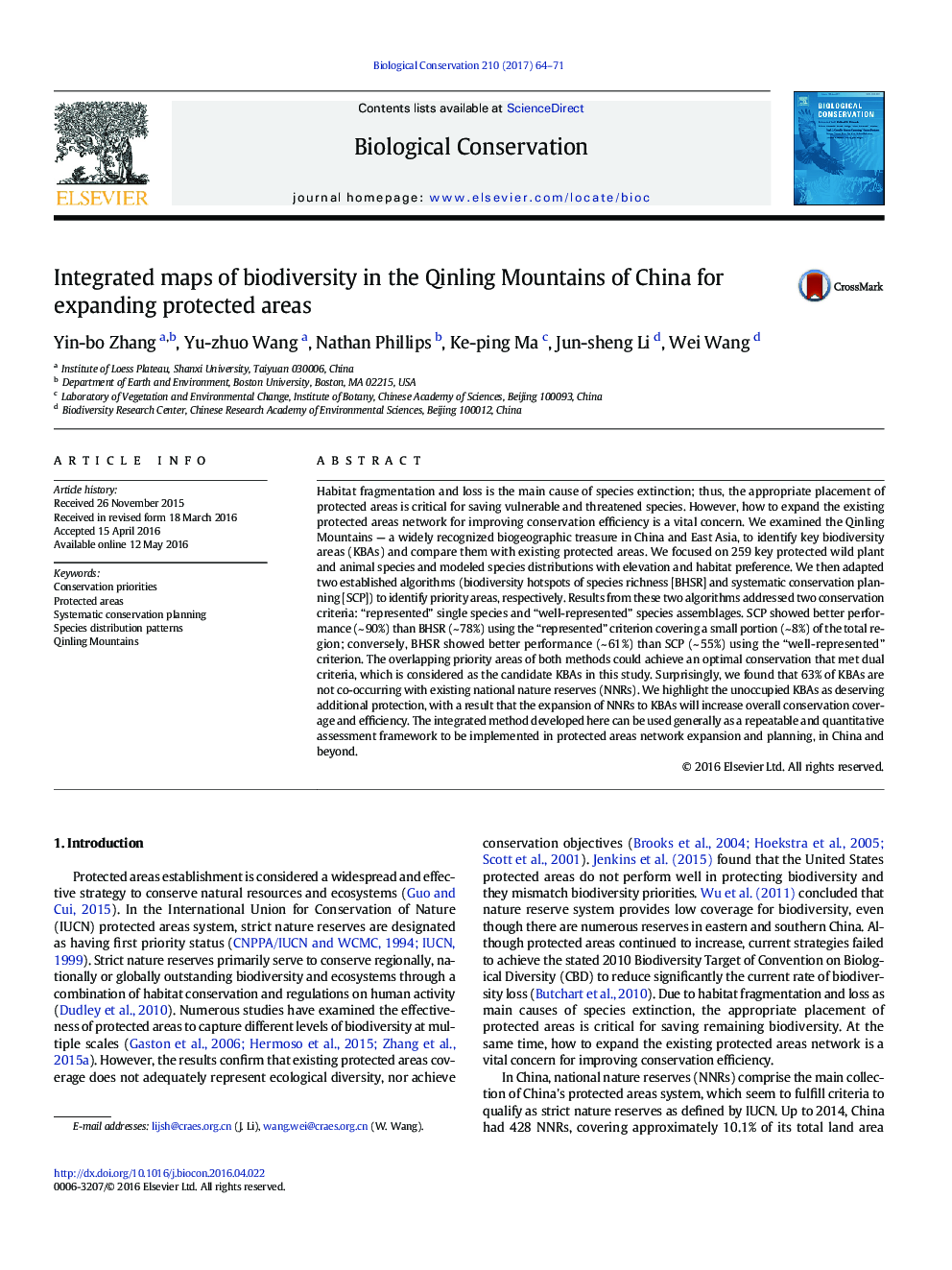| کد مقاله | کد نشریه | سال انتشار | مقاله انگلیسی | نسخه تمام متن |
|---|---|---|---|---|
| 5743162 | 1617892 | 2017 | 8 صفحه PDF | دانلود رایگان |
- KBAs are identified by SCP and BHSR, respectively.
- Represented and well-represented are used to assess the represented efficiencies.
- Represented efficiencies of SCP and BHSR are compared.
- 63% of KBAs were still outside the NNRs.
- This methodology can be repeated in other places.
Habitat fragmentation and loss is the main cause of species extinction; thus, the appropriate placement of protected areas is critical for saving vulnerable and threatened species. However, how to expand the existing protected areas network for improving conservation efficiency is a vital concern. We examined the Qinling Mountains - a widely recognized biogeographic treasure in China and East Asia, to identify key biodiversity areas (KBAs) and compare them with existing protected areas. We focused on 259 key protected wild plant and animal species and modeled species distributions with elevation and habitat preference. We then adapted two established algorithms (biodiversity hotspots of species richness [BHSR] and systematic conservation planning [SCP]) to identify priority areas, respectively. Results from these two algorithms addressed two conservation criteria: “represented” single species and “well-represented” species assemblages. SCP showed better performance (~Â 90%) than BHSR (~Â 78%) using the “represented” criterion covering a small portion (~Â 8%) of the total region; conversely, BHSR showed better performance (~Â 61%) than SCP (~Â 55%) using the “well-represented” criterion. The overlapping priority areas of both methods could achieve an optimal conservation that met dual criteria, which is considered as the candidate KBAs in this study. Surprisingly, we found that 63% of KBAs are not co-occurring with existing national nature reserves (NNRs). We highlight the unoccupied KBAs as deserving additional protection, with a result that the expansion of NNRs to KBAs will increase overall conservation coverage and efficiency. The integrated method developed here can be used generally as a repeatable and quantitative assessment framework to be implemented in protected areas network expansion and planning, in China and beyond.
Journal: Biological Conservation - Volume 210, Part B, June 2017, Pages 64-71
